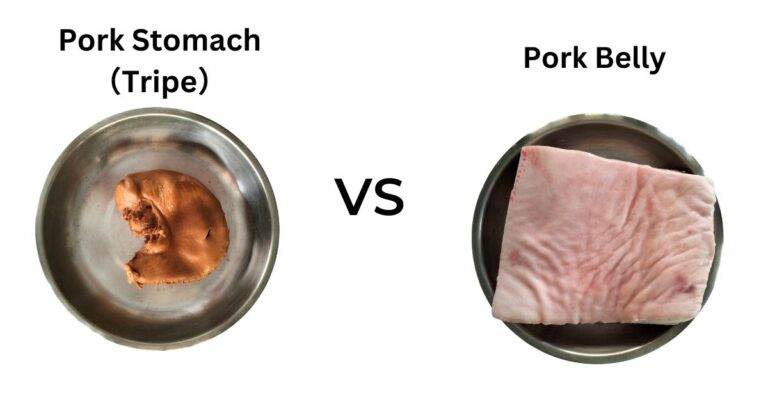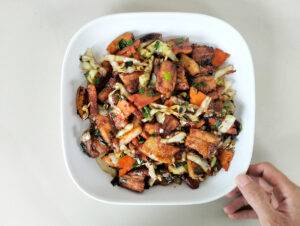Table of Contents
Understanding Pork Belly, Pork Stomach, Buche, and Pork Stripe
When it comes to Pork belly and pork stomach. People always needed clarification. So, I figured doing a Pork Belly vs Pork Stomach showdown would be good.
The simple answer is pork belly refers to the pig’s underside. The pork stomach is inside the pig, which is the stomach lining. So, stick around and lets discover the the mysteries of pork belly and pork stomach.
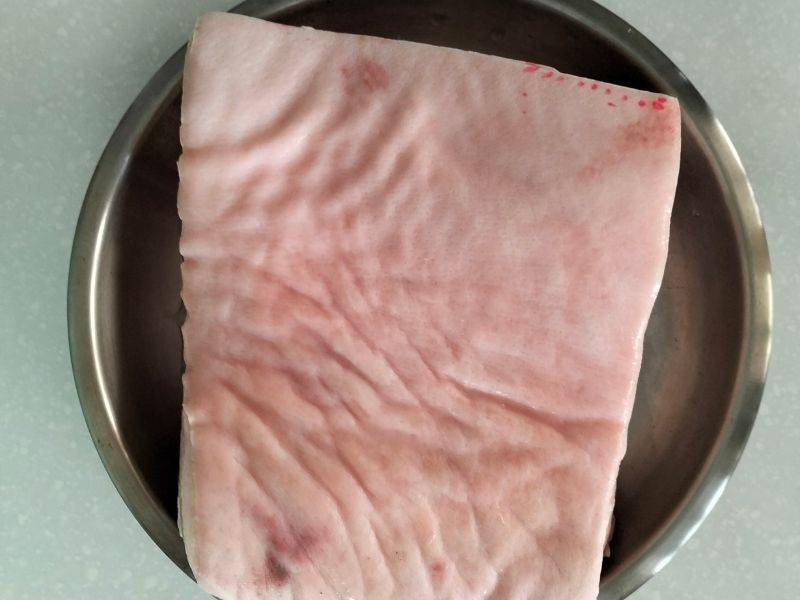
To add to more confusion, we have a different name for pork stomach. The most common one is pork tripe. They are the same part. In the united states, more people are familiar with the pork tripe. Beef tripe and pork tripe refer to their respective animals’ stomach linings.
The naming or terminology for pork tripe is likely influenced by the familiarity and usage of “beef tripe” in American culinary practices. Sometimes, you are going to come across Buche. Buche (Spanish means pork belly) is a term widely used among the Mexican population in the United States. In Asia, and most parts of the world, the name “pork stomach” is adopted.
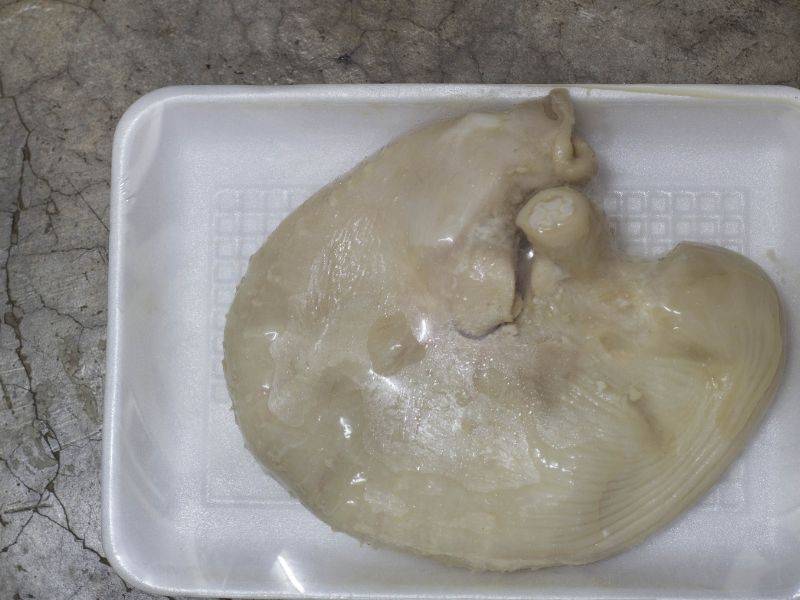
Visual, Taste and Texture Comparison: Pork Belly vs Pork Stomach
| Pork Belly | Pork Tripe | |
|---|---|---|
| Appearance | Rectangular shape with multiple layers of fat | Larger size with an irregular shape and wrinkled surface |
| Texture | Tender and succulent meat | Chewy and somewhat rubbery |
| Fat Content | High fat marbling, adding flavor and juiciness | Relatively lower, with fat concentrated around edges and membranes |
| Flavor | Rich and savory, with a pronounced taste from fat marbling | Distinct and unique, with a mild, slightly earthy taste |
| Cooking Result | Crispy exterior when rendered, with a melt-in-your-mouth sensation | Texture influenced by connective tissues, providing a unique mouthfeel |
| Culinary Uses | Used in various dishes such as bacon, braised pork belly, and pork belly buns | Commonly used in soups, stews, and stir-fries, as well as in some regional dishes like chitlins |
Culinary methods for pork belly
Pork belly is renowned for its use in crispy pork belly dishes, bacon, and various Asian dishes. In contrast, pork stomach is commonly utilized in soups, stews, and braised dishes due to its ability to absorb flavors.
Let’s first look at the best methods for cooking pork belly. Please note that this list only includes some possible pork belly cooking methods.

Braising
- Slow-cooking pork belly method in liquid (such as broth or sauce).
- Results in tender, melt-in-your-mouth texture.
- Braising enhances flavors and allows for the absorption of savory aromatics.
- Creates a juicy pork belly with rich, savory flavors.
Grilling
- High-heat cooking technique over hot grill.
- Develops a smoky and charred exterior while maintaining juiciness inside.
- Grilling caramelizes the fat, adding depth and complexity to the flavor.
- Yields a slightly crispy and flavorful crust with a moist and tender interior.
Roasting
- The dry-heat cooking method in the oven or air fryer at moderate to high temperatures.
- Renders fat, resulting in a crispy and crunchy exterior.
- Roasting gives a golden brown body, crispy skin, and tender and juicy inside.
- Produces a combination of tender meat and a delightful contrast in textures.
- Dish examples: Crispy Crackling Skin Pork Belly and Cheesy Crispy Pork Belly Kebabs
Culinary methods for pork stomach (pork tripe)
Like pork belly, you can cook these with any method you prefer. However, pork tripe is usually used for cooking dishes that require slow cooking. But there does not mean this is the only way. Let’s see a couple of the best methods for cooking the pork stomach.
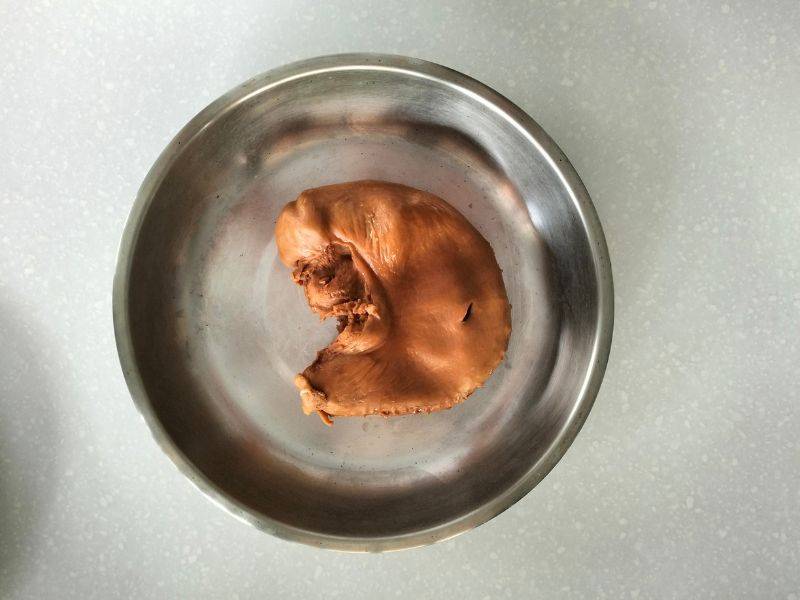
Braising
This is a classic method for preparing pork stomachs. Start by searing the pork in a hot pan until it’s browned on all sides. Then, transfer it to a pot with some broth or wine and let it simmer for a few hours until it’s tender.
Soup
Cooking pork stomachs in soup is a great way to enjoy this unique meat. After thoroughly cleaning the pork stomach and blanching it in boiling water, add it to a flavorful broth and simmer until tender. You can also add other ingredients, such as vegetables, herbs, and spices, to enhance the soup’s flavor.
Pork stomach soup is a popular dish in many cultures and can be a comforting and satisfying meal on a cold day. I have been eating stripe soup dish for as long as I can remember.
Stir Frying
Another way to prepare pork stomach is to stir fry them. Cut it into thin slices. Stir fry with veggies. Stir-frying works because we are cooking it in small pieces. It is still chewy, not will not be tough. Chinese love to cook this way. My grandma used to cook for me very often.
Deep Frying
At first, this may seem strange and impossible. However, anything is possible. It is actually straightforward to cook it. Cut it into thin slices, mix it with flour, and deep fry it.
I hope these methods give you some inspiration for cooking with pork stomach.
Culinary uses: Pork Belly and Pork Stomach
For examples of culinary dishes found worldwide:
Pork Belly:
- Korean Samgyeopsal: Grilled pork belly slices served with various accompaniments like lettuce wraps, kimchi, and dipping sauces.
- Chinese Roast Pork (Char Siu): Marinated and roasted pork belly with a sweet and savory glaze, often used in stir-fries, noodles, or as a standalone dish.
- Bacon: Cured and smoked pork belly slices are versatile ingredients in breakfast dishes, sandwiches, salads, and more. Read more about Bacon vs Pork belly here.

Pork Stomach:
- Filipino Dinuguan: Stewed pork stomach cooked in a rich, savory sauce made with pig’s blood, vinegar, and spices, resulting in a dark and flavorful dish.
- Mexican Menudo: A traditional soup made with pork stomach, tripe, and hominy, simmered with spices and served with garnishes like lime, onions, and cilantro.
- Cuajitos (Puerto Rico): A fried snack made with pork stomach, green bananas, and spices. It is typically served with a dipping sauce.
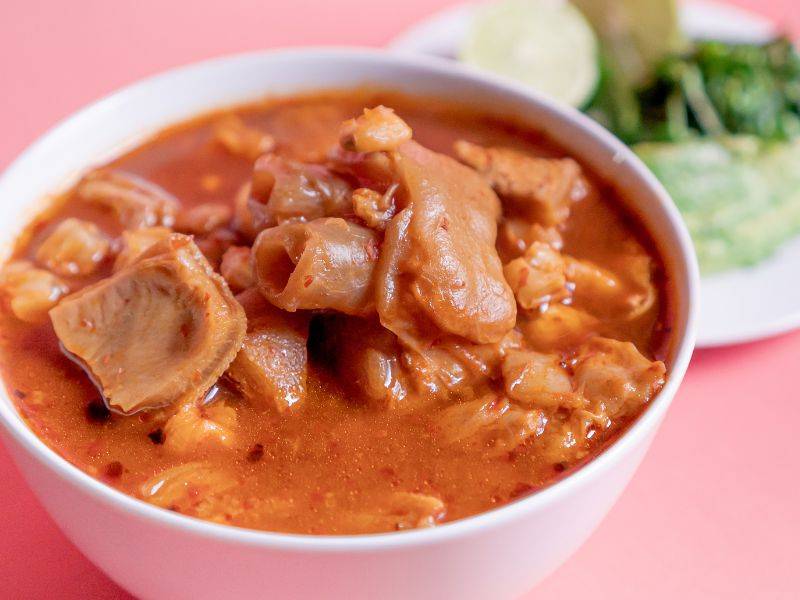
Price comparison: Pork Belly vs Pork Stomach
| Pork Belly | Pork Stomach | |
|---|---|---|
| Price | Generally more expensive due to high demand | Typically more affordable, considered a budget-friendly option |
| Factors Affecting Price | Popularity and high demand | Lower demand and perception of being an acquired taste |
| Desirability | High due to its richness and fat content | May be considered an acquired taste |
Please note that the prices can vary depending on various factors such as location, market conditions, and availability.
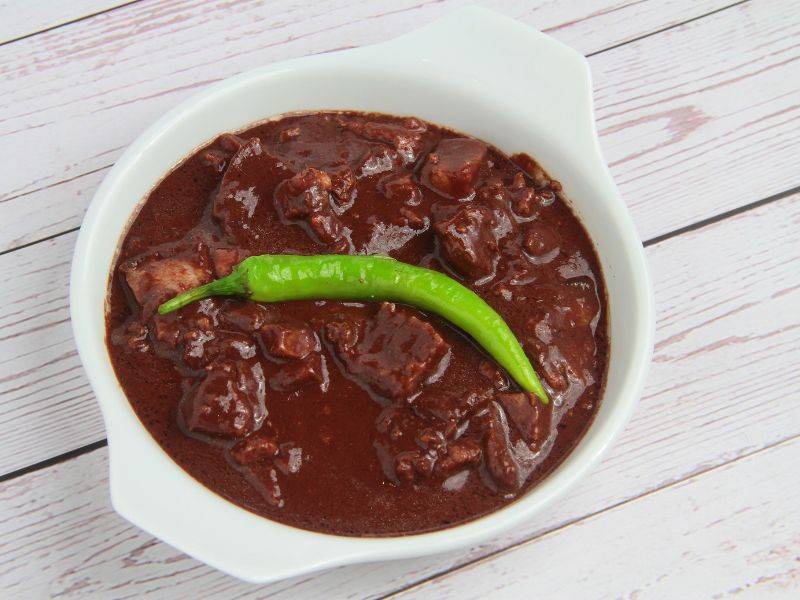
In conclusion, this article has explored the differences between pork belly and pork stomach in taste, texture, culinary methods, cultural significance, and nutrition. Pork belly offers a rich, fatty flavor and tender texture, making it ideal for dishes like Korean Samgyeopsal and Chinese roast pork.
Pork stomach, with its chewier texture and learner profile, shines in Filipino dinuguan and Mexican menudo. The choice between these cuts depends on personal taste, dietary considerations, and cultural influences.
Embracing the diversity of flavors and textures, pork belly and pork stomachs offer unique culinary experiences, allowing individuals to explore and enjoy the richness of various cuisines worldwide.

